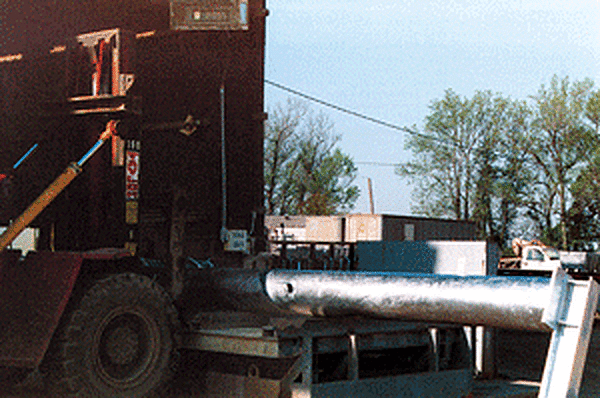Coating Thickness/Weight
The specifications (ASTM A123, A153, and A767) give requirements concerning the minimum zinc coating for a given material class during the hot-dip galvanizing process. The amount of coating can be specified by thickness or weight per surface area. The specifications include tables providing specific requirements for thickness or weight per surface area based upon the steel part type and the measured steel thickness.

Coating Thickness
There are two methods for measuring the zinc coating thickness of hot-dip galvanized steel; a magnetic thickness gauge and optical microscopy. The simplest and non-destructive way is to utilize a magnetic thickness gauge, as optical microscopy is a destructive test only used to resolve measurement disputes.
There are three different types of magnetic thickness gauges:

- Pencil-Style Gauge is pocket-size and employs a spring-loaded magnet encased in a pencil-like container. Its accuracy depends on the skill of the inspector, thus the measurement should be taken multiple times.
- Banana Gauges have an advantage over pencil-style gauges as they can measure the coating thickness in any position without recalibration or interference from gravity.
- Electronic or Digital Gauge is the most accurate and easiest to use. Furthermore, electronic gauges can store data and perform averaging calculations.

The specification ASTM E376 contains information for measuring coating thickness with magnetic and electromagnetic gauges as accurately as possible by explaining how and where to take measurements as well as guidelines for reducing errors. A few key requirements include:
- Readings should not be taken near an edge, hole, or inside
- Measurements on large products should be made at least 4 inches from the edge
- Measurements taken on curved surfaces should be avoided if possible
- Readings should be on regular areas of the coating
- Measurement reading should be as widely dispersed as possible
- At least five readings should be taken to obtain a true value representative of the sample
Coating Weight
Coating weight refers to the mass of hot-dip galvanized coating applied to a product for a given surface area. Two different methods can be used to measure the coating weight of hot-dip galvanized steel.
The first uses a process called weigh-galvanize-weigh and is only appropriate for single specimen samples. Weigh-galvanize-weigh measures the weight of a steel part after it has been cleaned, and again after galvanizing is completed. This technique only measures the zinc metal added to the steel and will underestimate the total coating weight by up to 10%.

The second method is a destructive technique called weigh-strip-weigh, and again is only appropriate for single specimen samples. Weigh-strip-weigh measures the weight immediately after a galvanized part is cooled, and again after the coating has been stripped off the part using an acid solution. This method renders the part unusable as the coating is removed. The weights must then be divided by the surface area of the steel part to determine a value that can be compared to the specification requirement.

